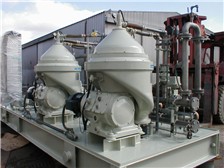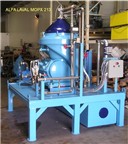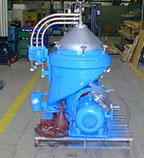As controversial as nuclear power is, with its still unresolved risks, waste storage problems and high capital costs, it currently meets about 14 percent of global electrical power demand through 430 power stations. However, as is the case with crude oil, coal or natural gas, reserves of uranium 235 – the fuel used in atomic power stations – are finite, meaning that they will run out one day. This poses a simple question: how much longer will our natural uranium reserves last?The annual demand for natural uranium, from which fissile material can be obtained in an elaborate and costly process, currently stands at about 68,000 tons. However, the annual uranium output from mining operations, amounting to about 50,000 tons, only covers about three quarters of this total figure. The shortfall is being met from uranium stockpiles, from the reprocessing of used fuel rods, and from uranium recovered from decommissioned power stations. The German Federal Institute for Geosciences and Natural Resources (Bundesanstalt für Geowissenschaften und Rohstoffe; BGR) in Hanover believes that this situation will continue for the next two decades or so.
Reserves for more than 200 years
BGR researchers, in their energy study, estimate that the reserves of uranium that can be extracted at a cost of less than 40 US dollars per ton amount to about 1.7 million tons. At the current rate of consumption, this would mean that we have sufficient reserves of uranium to last us more than 200 years. The bulk of these reserves are located in Australia (40 percent), followed by Canada (15 percent), Kazakhstan (13 percent), Brazil (8 percent) and South Africa (6.5 percent). While Germany does have its own uranium reserves, primarily in the Ore Mountains (Erzgebirge) region, extraction has been scaled down progressively since German reunification due to rising costs and the environmental impact of these operations. The BGR estimates that total reserves of uranium, including those for which extraction costs would be significantly higher, are many times greater than the reserves currently being exploited.
Uranium 235 is the most commonly used isotope in the types of power station that are in widespread use today. It accounts for less than one percent of natural uranium. The dominant isotope, accounting for about 99 percent, is uranium 238. This can only be used in breeder reactors like the decommissioned German 'fast breeder' at Kalkar. Worldwide, a small number of breeder reactors, which can also be used to manufacture weapons-grade fissile material, are operated by the USA, Russia and India. Despite decades of research, the complex technology involved in these breeder reactors has not developed sufficiently for use in cost-effective electricity generation.
The DLR Energy question of the week in 'The future of energy' Year of Science
The Federal Ministry of Education and Research (BMBF) has given the Year of Science 2010 the motto 'The future of energy'. For this reason the science journalist Jan Oliver Löfken will this year answer a question on the subject of energy in his blog each week. Do you have a question about how our energy supply might look in the future? Or do you want to know, for example, how a wave power plant works and how it can efficiently generate electricity? Then send us your question by email. Science journalist Jan Oliver Löfken will investigate the answers and publish them each week in this blog.
source: www.dlr.de/blogs













